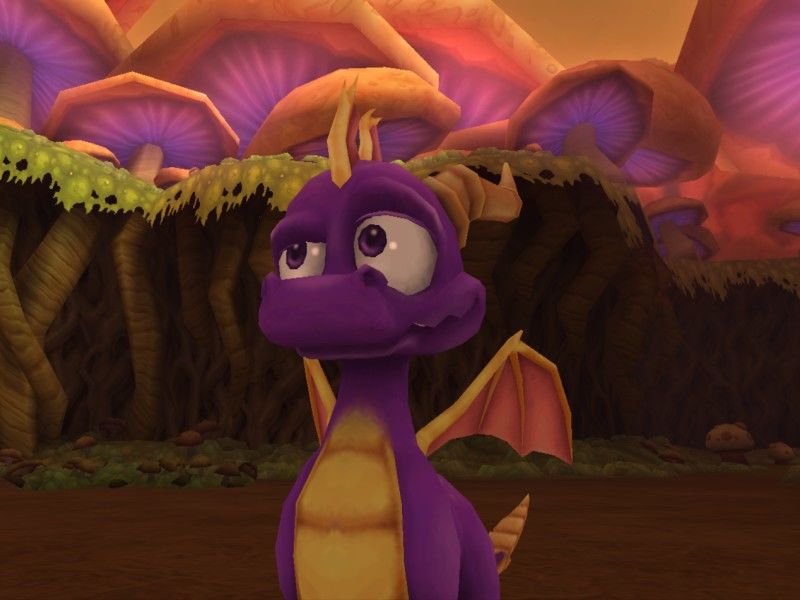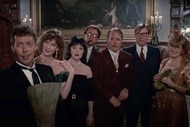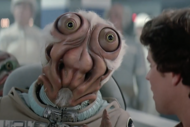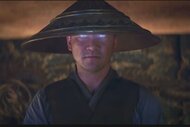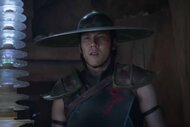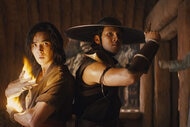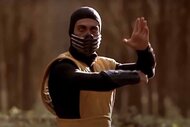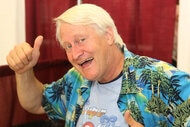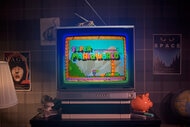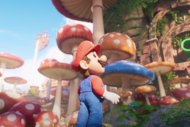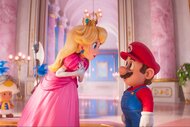Create a free profile to get unlimited access to exclusive videos, sweepstakes, and more!
We love Spyro the Dragon and need him back pronto

The '90s were one of the most important eras in gaming. The debut of the PlayStation in 1994 led to the arrival of CDs as viable software vessels and helped trigger the war of animal mascots. While there were many of those cartoonish beasts, few can boast a history as successful and strange as the hero we all know and love: Spyro the Dragon.
A HERO TAKES FLIGHT
Insomniac Games' little purple dragon was ultimately a great departure from the developer's first game, Disruptor. But it didn't begin that way; Spyro was originally dark and mature, primarily influenced by Dragonheart, but the direction was later changed to appeal to a younger audience. The pivot paid off, with Spyro becoming a critical darling in 1998 and a hit during the holidays.
The original game, Spyro the Dragon (1998), helped turn the character into an icon for the PlayStation (alongside Naughty Dog's Crash Bandicoot) and was soon followed up by two equally beloved sequels: Spyro 2: Ripto's Rage! (1999) and Spyro: Year of the Dragon (2000). Insomniac would bow out with the trilogy, having completed its four-game deal with Universal Interactive, which took its original mascot and went down a rockier path.
With Universal now holding the rights, Spyro went through a troubled time through most of the 2000s. Now available on Xbox and Gamecube in addition to PS2, the lows were real low: Enter the Dragonfly, the first multiplatform game, received the lowest reviews of the series, with Insomniac CEO Ted Price even saying the game treated Spyro like "an abused stepchild." Several games were planned, including an educational title, but all were canceled at various points in development.
On the handheld, Spyro fared much better in the hands of developer Digital Eclipse. Beyond its short-lived trilogy on the Gameboy Advance, Spyro also found mild success thanks to experimenting with different genres. The Spyro Orange/Crash Purple crossover with fellow ex-mascot Crash Bandicoot was a minigame-filled sidescroller, and the Nintendo DS' Spyro: Shadow Legacy allowed Spyro to try his hand at being in an RPG, of all things.
These little dalliances would come to an end, though, thanks to a direction that changed everything for Spyro, mostly for the better.
FROM DRAGON TO LEGEND
On the list of things anyone could do with Spyro, a reboot probably wouldn't be at the top of the list. Vivendi thought otherwise and asked developer Krome Studios to try at a reboot after seeing the studio's plans for a new Crash Bandicoot.
The result was 2006's The Legend of Spyro: A New Beginning, which dumps the continuity of all the earlier games for an entirely new take on its titular character.
This reboot was clearly inspired by Harry Potter — Spyro was no longer a dragon who got lucky because of his small size, but part of a prophecy to determine the fate of the world. If that weren't enough of a sign of its ambitions, the reboot had a star-studded cast behind it, with Elijah Wood voicing Spyro, David Spade as his friend Sparx, Mark Hamill as the villain of the third game, and Gary Oldman (yes, really) as Spyro's mentor Ignitus.
The point was made clear: This wasn't your older sibling's Spyro.
Unlike the earlier post-Insomniac console games, Legend earned solid reviews and wound up being a modest success for its time. It left its own mark on the franchise, from its genre shift to action-adventure to Dawn of the Dragon, the final installment in the reboot, which let Spyro fly at any time.
For a moment, it seemed Spyro would get his own film during the late 2000s, which would've adapted the Legend trilogy and kicked off a franchise. Numerous delays struck the film before it was ultimately canceled, the only evidence of its existence being a majestic teaser poster. The reason for the film's cancellation can be tied to the most recent — and reviled — of Spyro's tenure: the Skylanders Saga.
SKYLANDERS GROUNDS SPYRO
In the summer of 2008, Vivendi merged with Call of Duty publisher Activision to form Activision Blizzard. Following the release of Dawn later that year, Activision gave developer Toys for Bob a chance to revive any Vivendi franchise it wished, and the team chose Spyro.
The developers eventually focused its ideas to create Skylanders: Spyro's Adventure, yet another reboot whose big innovation would be that gamers could buy physical toys of the characters and use a portal peripheral to add them into the game. Spyro was one of the characters in the game's starter pack when it released in 2011, but it quickly became clear that this wasn't his game so much as he was the starting point to something bigger.
Skylanders was a hit, with the toys alone selling higher than Activision initially predicted. This led to a franchise spanning a series of kids' novels, comics, and a short-lived Netflix series. Its yearly sequels were problematic given Activision's track record with Call of Duty, but the feeling exacerbated once Disney introduced its own toys-to-life franchise, Disney Infinity, in 2013. Skylanders came out on top and Infinity ended in 2015, but it would soon suffer the same fate that following year after Skylanders: Imaginators failed to meet sales expectations.
Not that it ultimately mattered. By that point, Skylanders had become the 11th biggest console franchise of all time.
With each sequel, Spyro faded more and more into the background, leaving his original fans in the dust. It was only fitting, then, that Activision make one final attempt to court them after having spent so much time focusing on a younger market.
After the sales success of Vicarious Visions' remaster of the original Crash Bandicoot trilogy in 2017, fans demanded Spyro be next. 2018's Reignited Trilogy brought the first three games to current gen consoles, becoming the best-selling PS4 game in Australia during its first week and beating two Pokémon games for the top spot in physical sales in the UK.
Since the release of Reignited, fans have waited with bated breath to see if Spyro will continue.
A recent earnings call from Activision said Spyro and Crash were "flagship brands" alongside Call of Duty and Overwatch. With the PS4 and Xbox One's time soon ending, fans may get their wish and see Spyro take flight yet again on shiny new consoles. If any mascot deserves a resurgence, it would be him — if the Reignited Trilogy has shown us anything, it's that his flame still burns bright.
